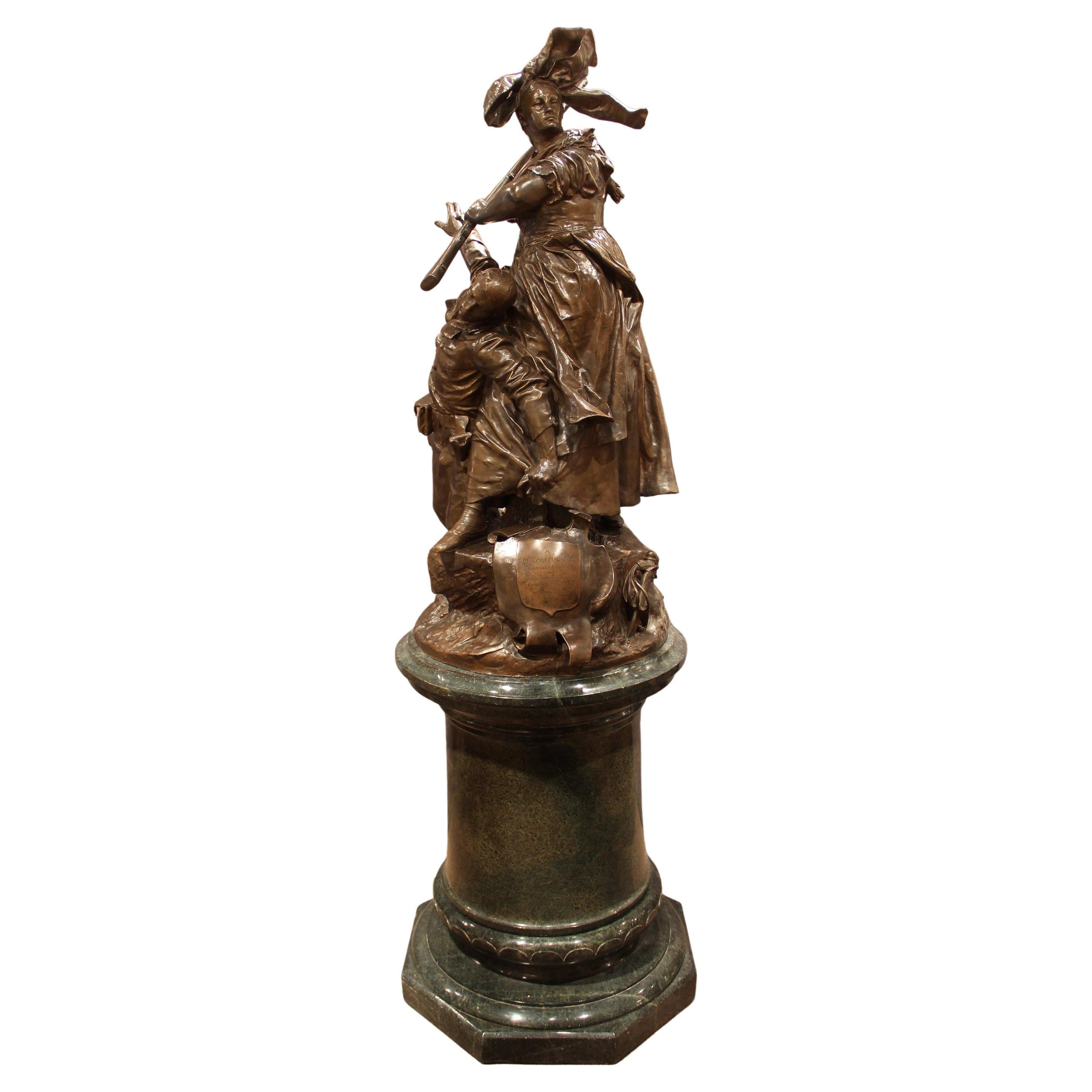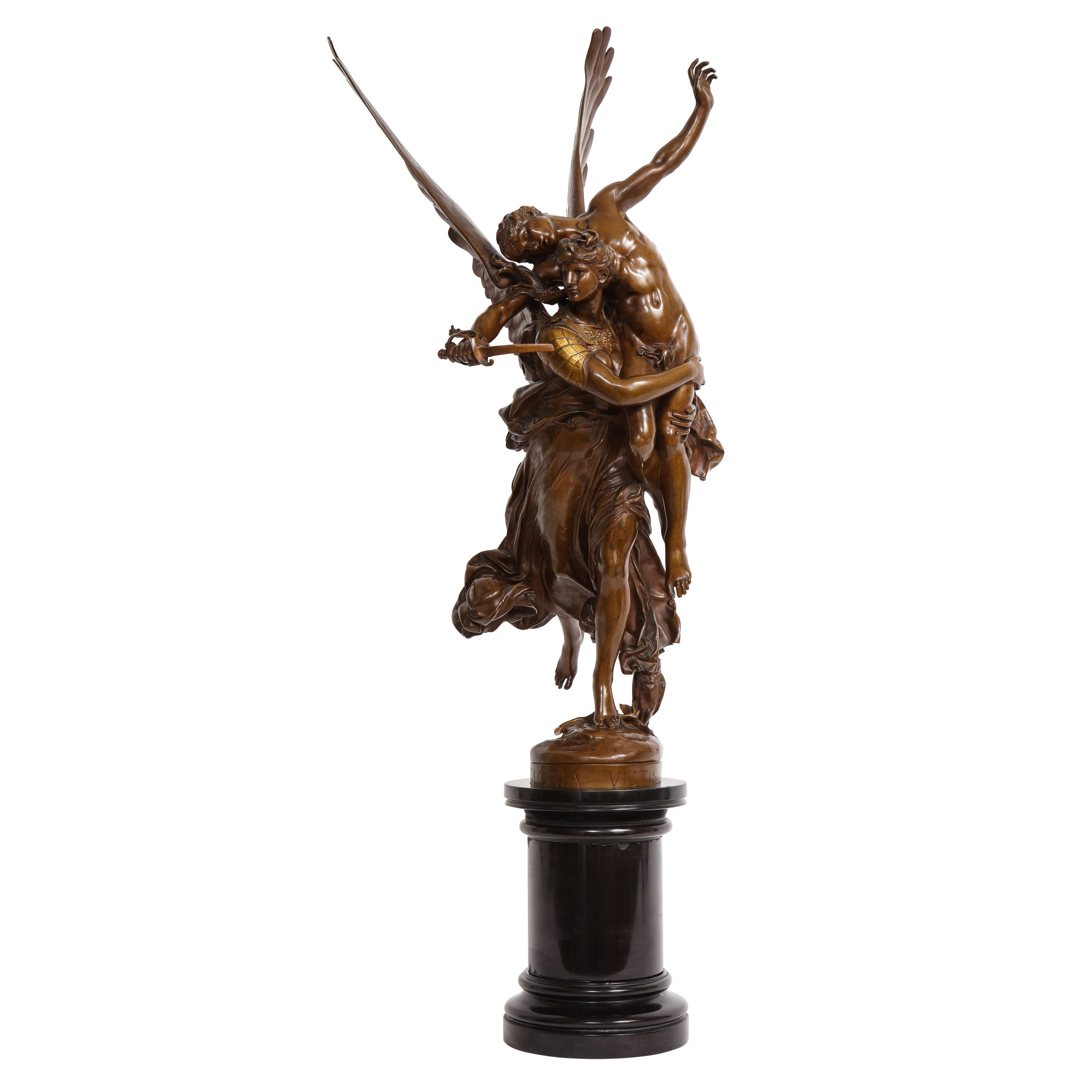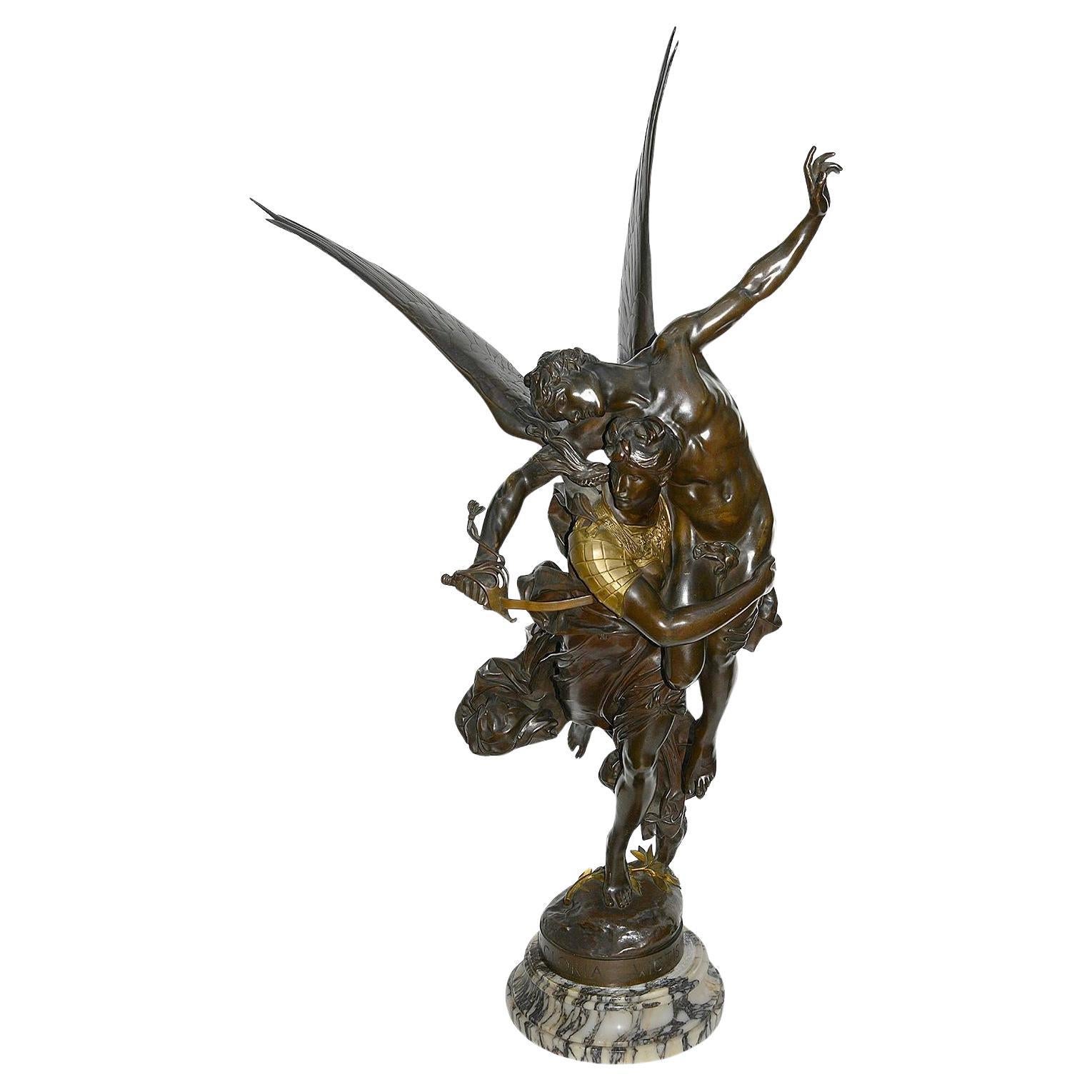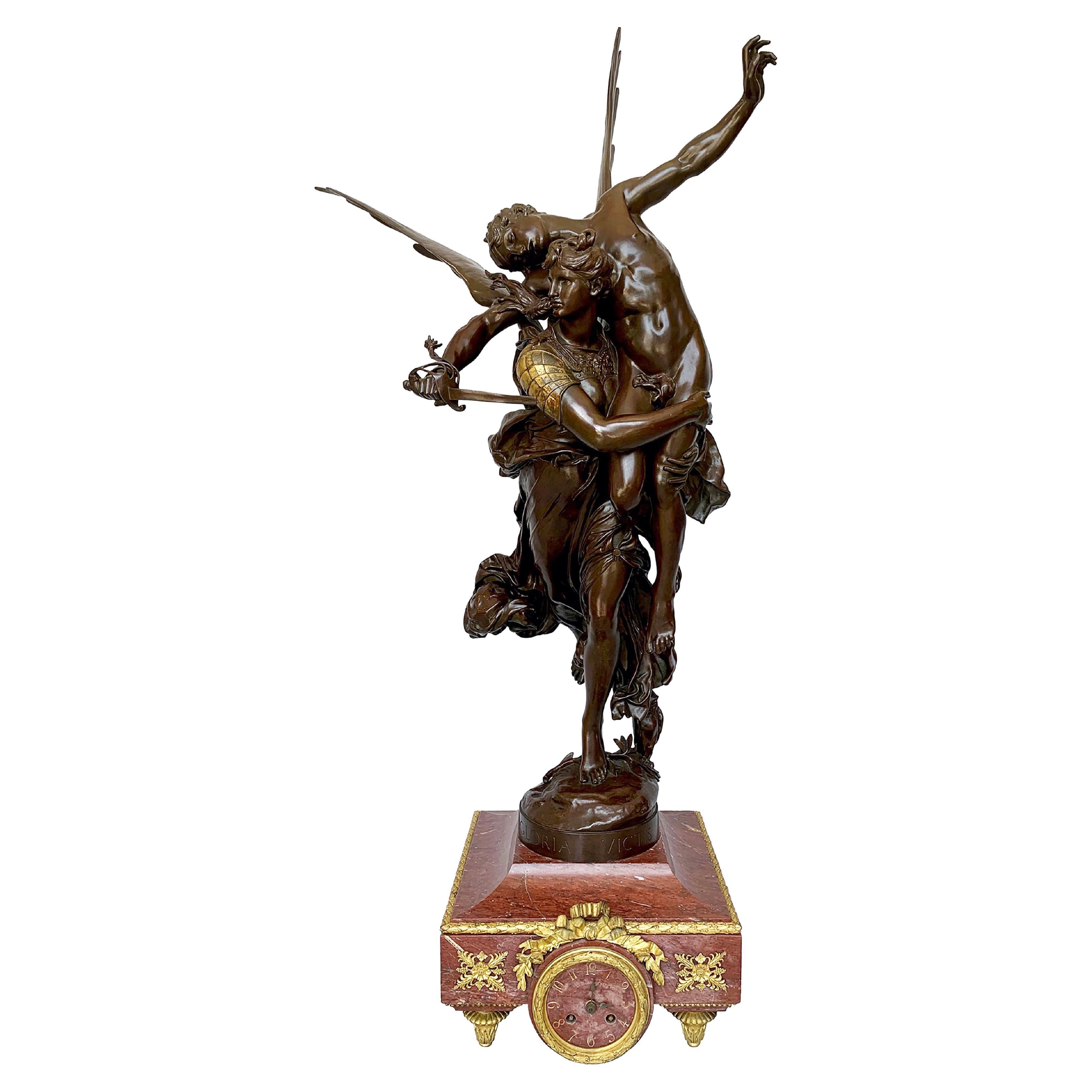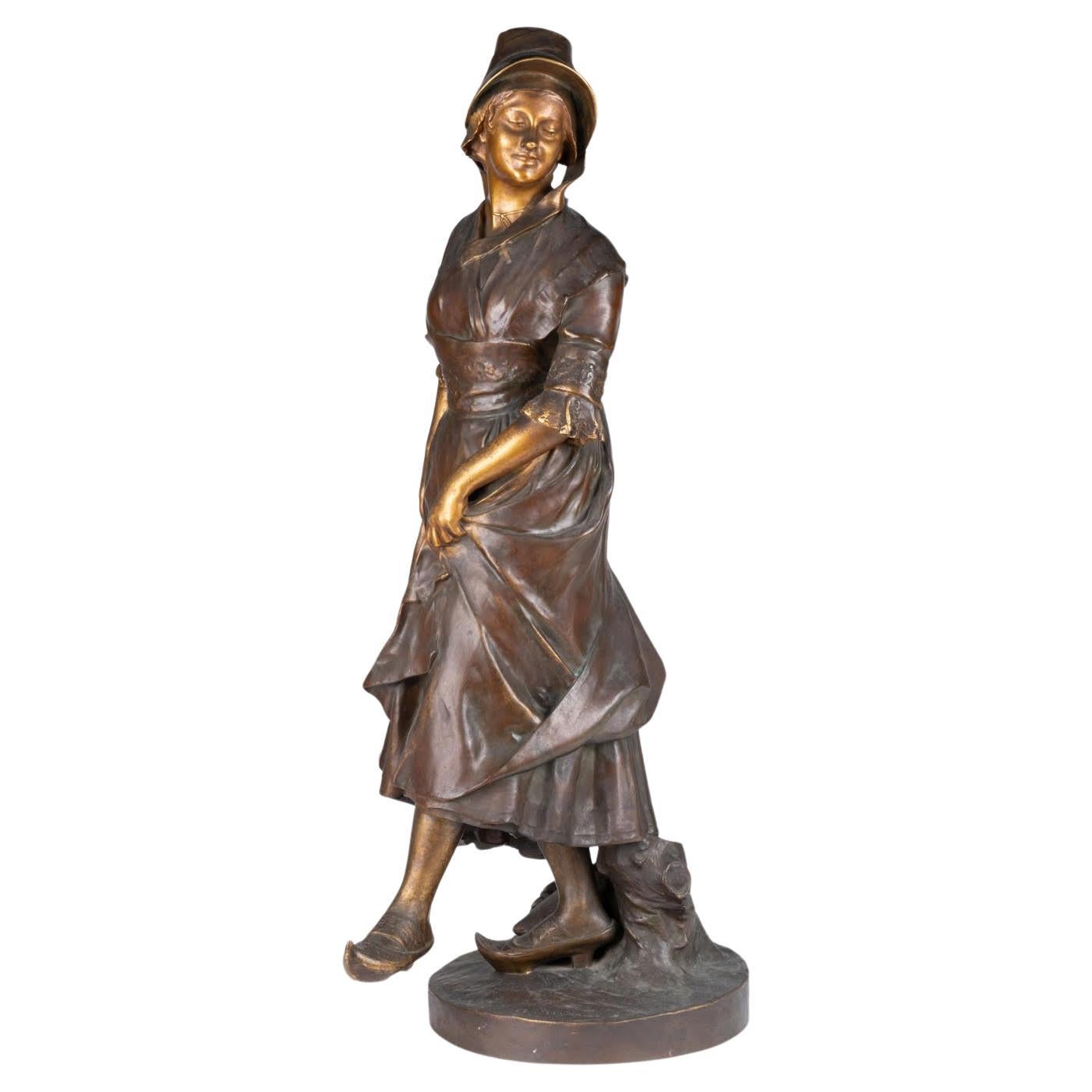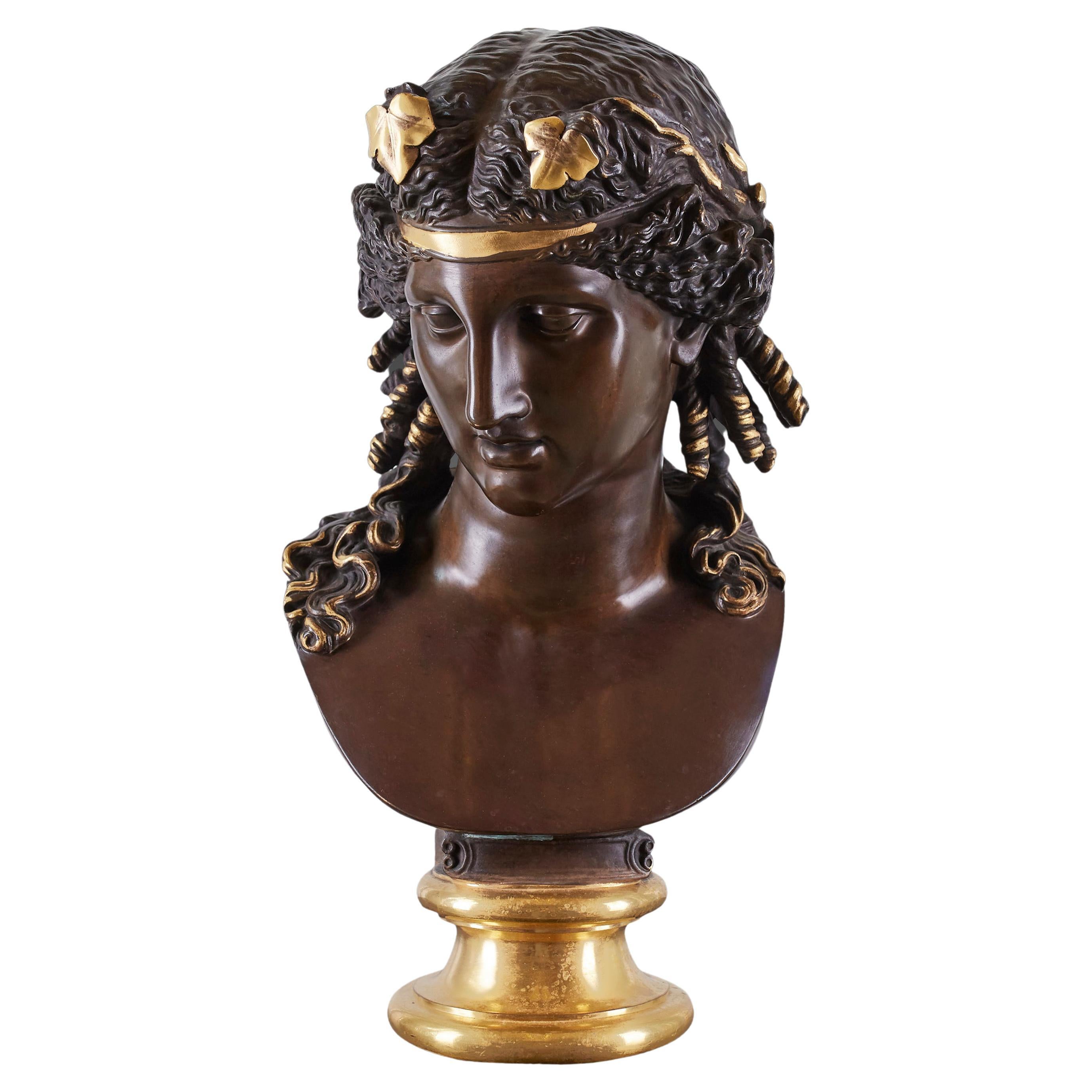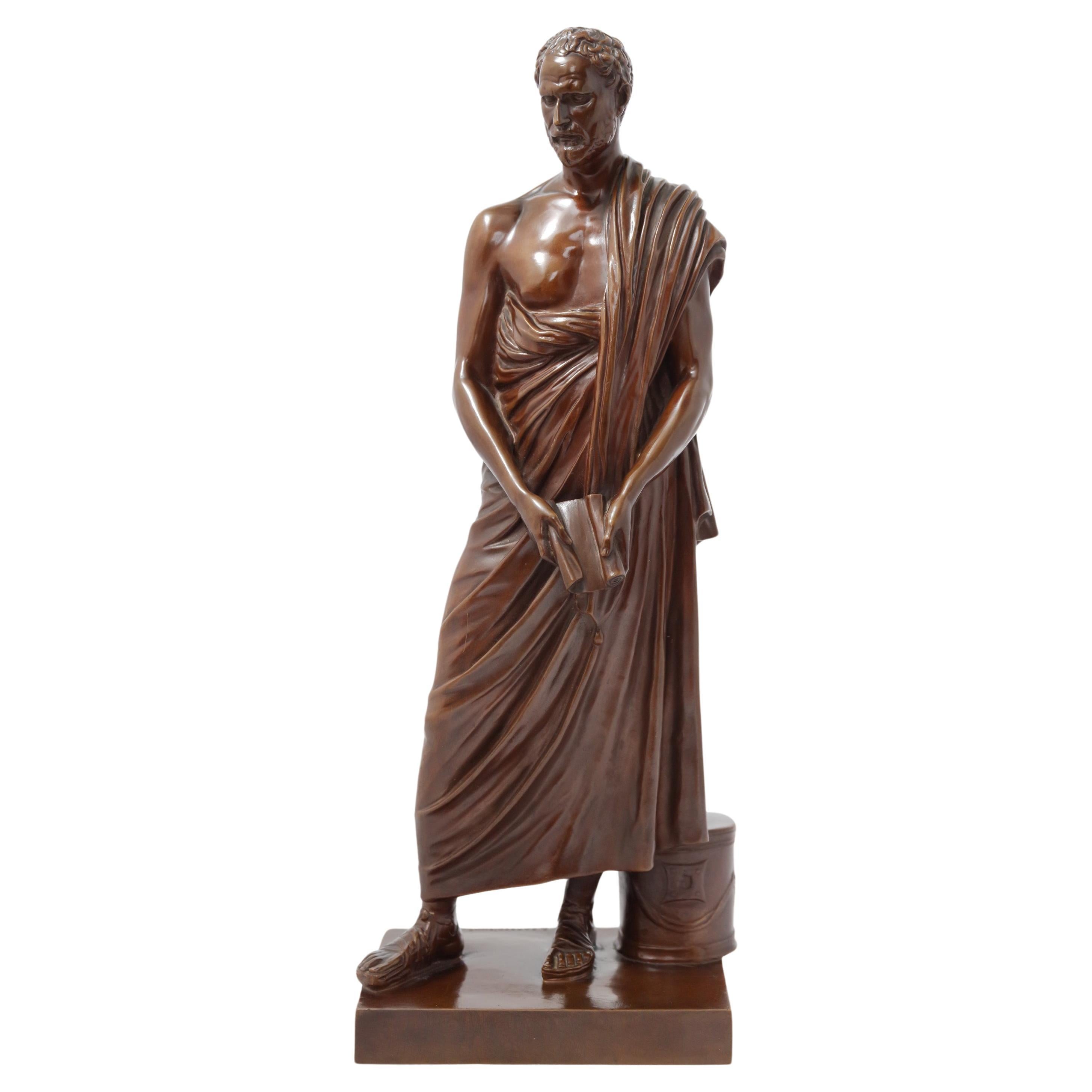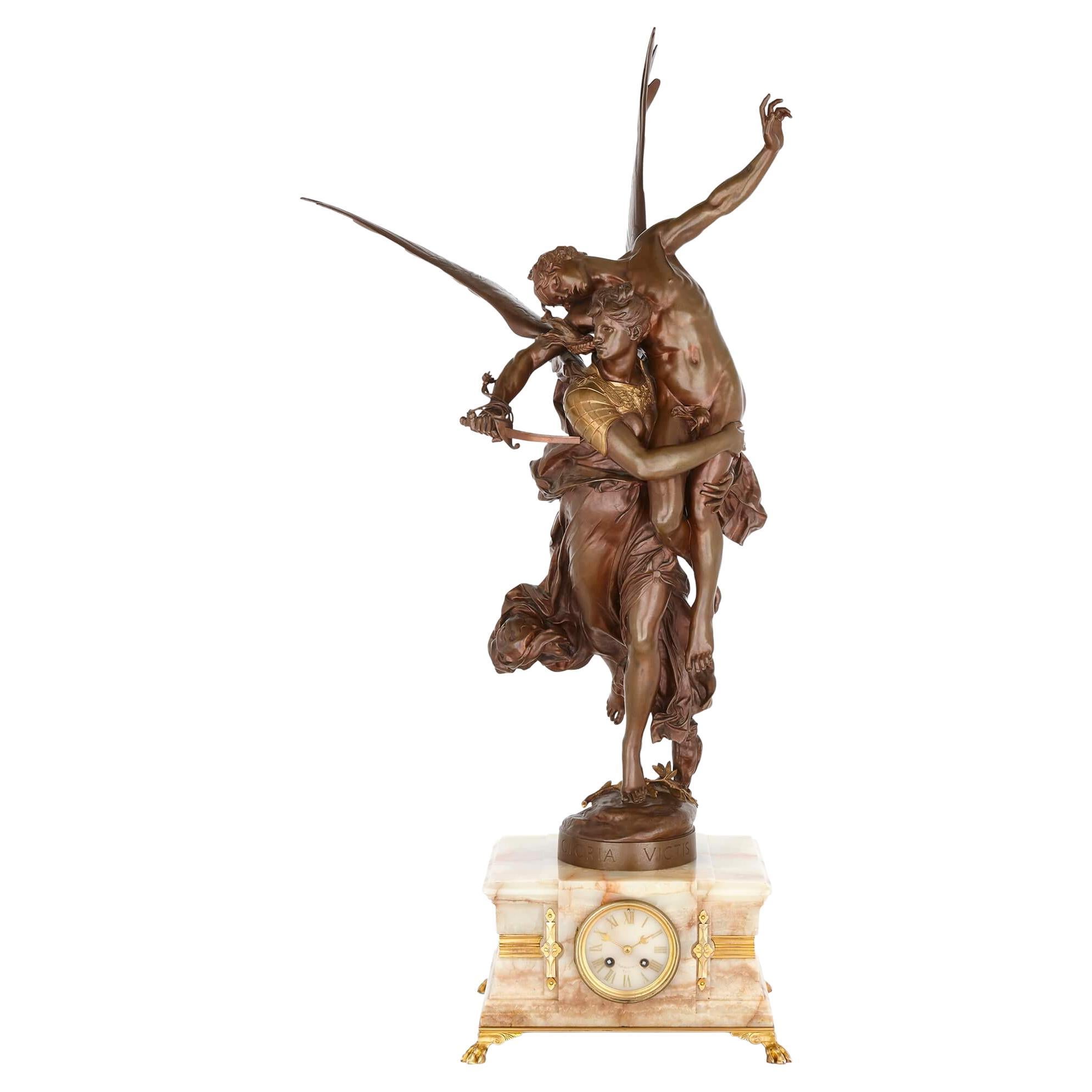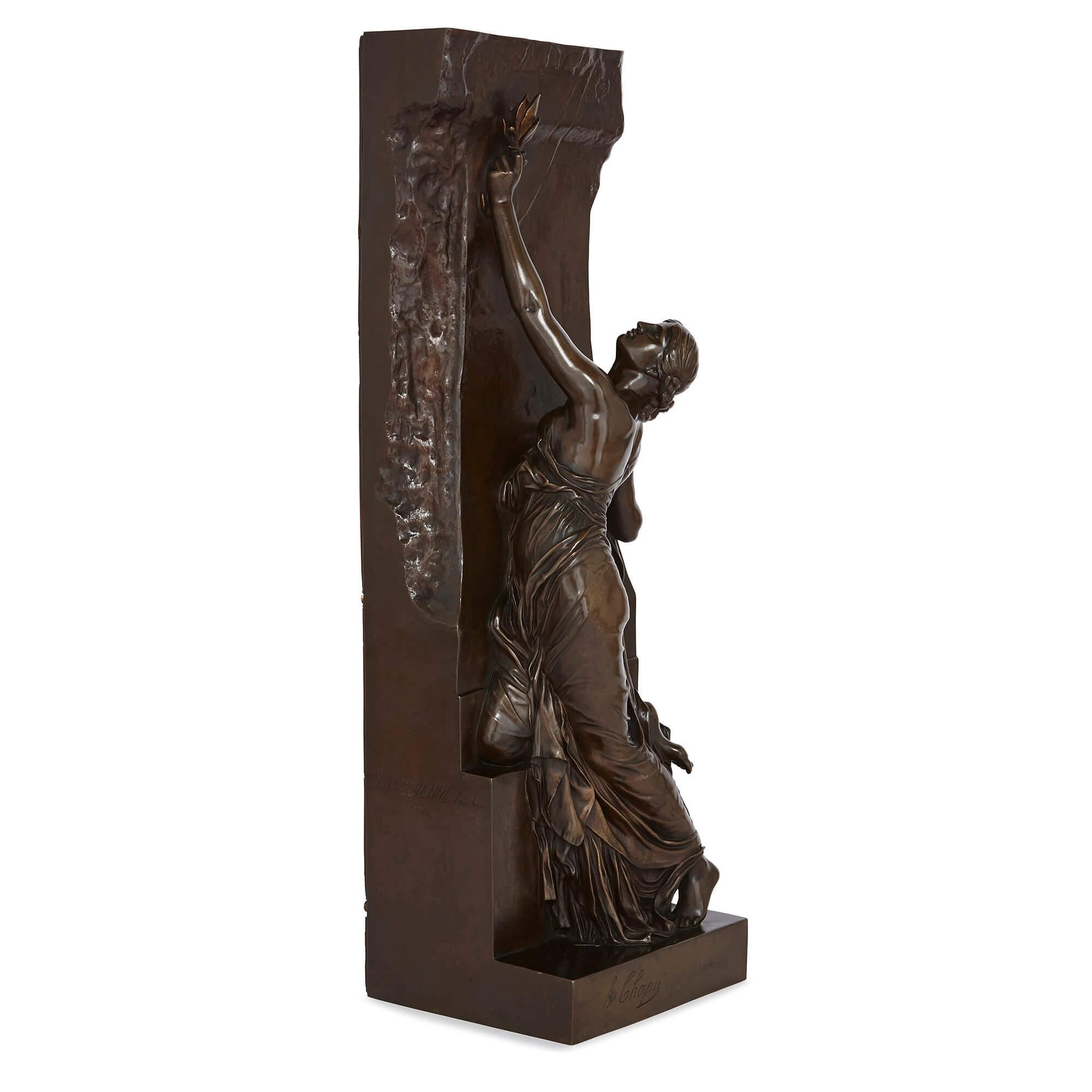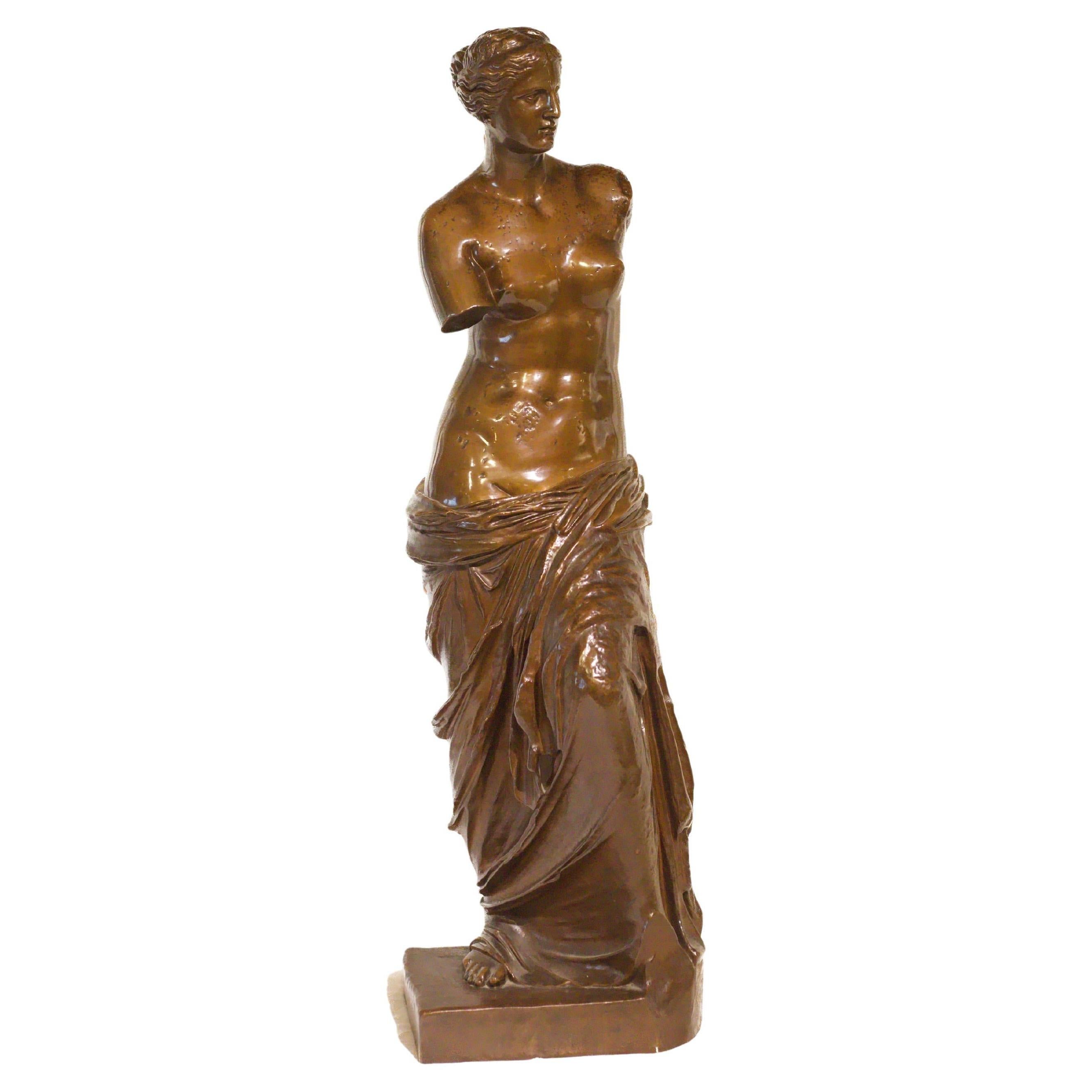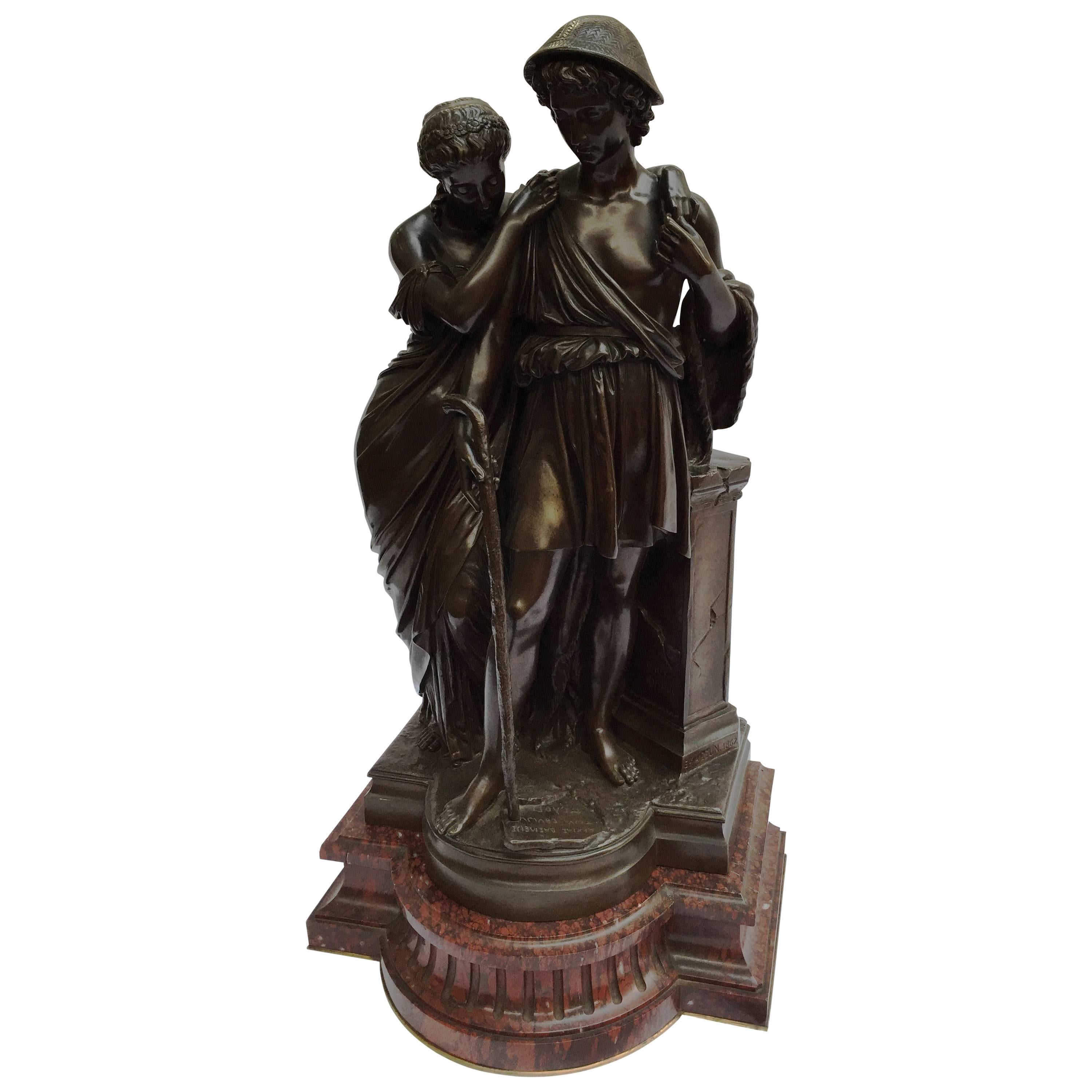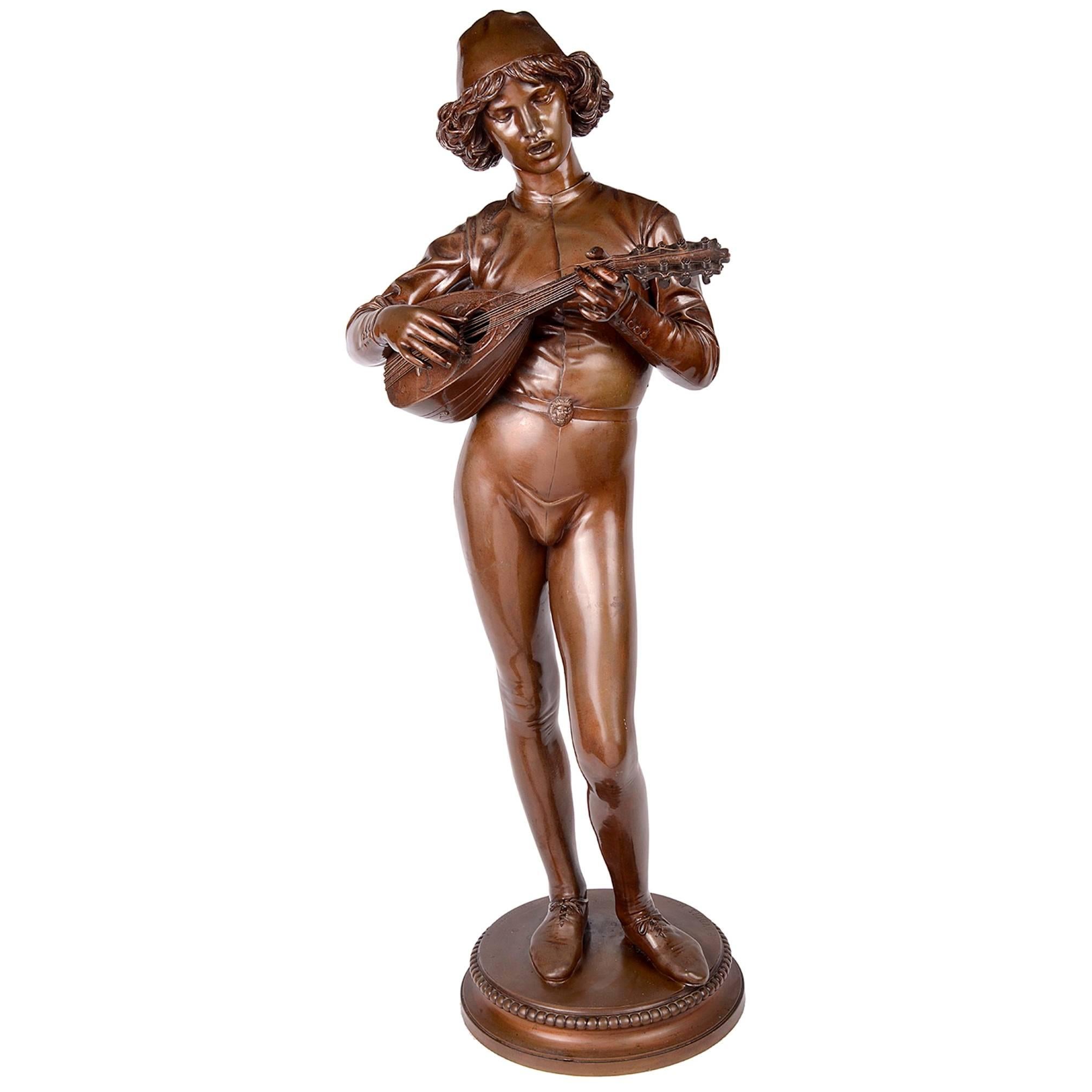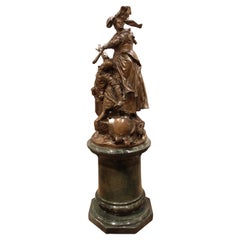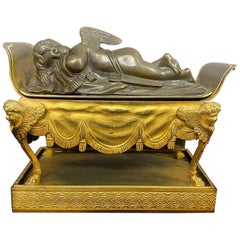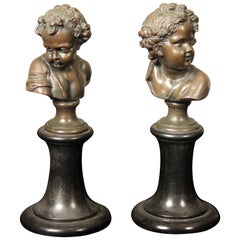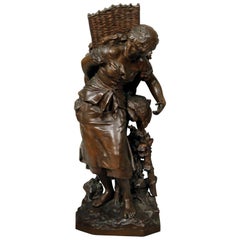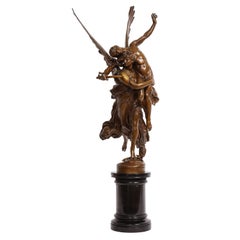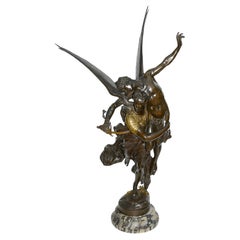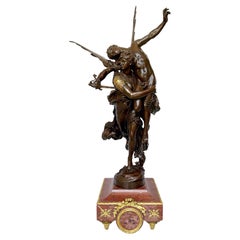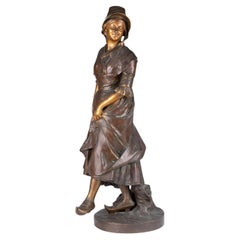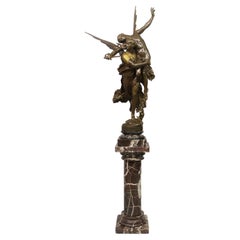
Exceptional Late 19th Century Bronze “Gloria Victis” by Mercié and Barbedienne
View Similar Items
Want more images or videos?
Request additional images or videos from the seller
1 of 9
Exceptional Late 19th Century Bronze “Gloria Victis” by Mercié and Barbedienne
$95,000List Price
About the Item
- Creator:Antonin Mercie (Sculptor)
- Dimensions:Height: 56 in (142.24 cm)Width: 33 in (83.82 cm)Depth: 25 in (63.5 cm)
- Style:Belle Époque (Of the Period)
- Materials and Techniques:
- Place of Origin:
- Period:
- Date of Manufacture:circa 1875
- Condition:Wear consistent with age and use.
- Seller Location:Long Island City, NY
- Reference Number:Seller: VB731stDibs: LU905625725902
About the Seller
5.0
Vetted Professional Seller
Every seller passes strict standards for authenticity and reliability
Established in 1924
1stDibs seller since 2010
84 sales on 1stDibs
Associations
The Art and Antique Dealers League of AmericaAntiques Associations Members
Authenticity Guarantee
In the unlikely event there’s an issue with an item’s authenticity, contact us within 1 year for a full refund. DetailsMoney-Back Guarantee
If your item is not as described, is damaged in transit, or does not arrive, contact us within 7 days for a full refund. Details24-Hour Cancellation
You have a 24-hour grace period in which to reconsider your purchase, with no questions asked.Vetted Professional Sellers
Our world-class sellers must adhere to strict standards for service and quality, maintaining the integrity of our listings.Price-Match Guarantee
If you find that a seller listed the same item for a lower price elsewhere, we’ll match it.Trusted Global Delivery
Our best-in-class carrier network provides specialized shipping options worldwide, including custom delivery.More From This Seller
View AllExceptional 19th Century Bronze Entitled ““Quand Meme” by Mercié and Barbedienne
By Antonin Mercie, Ferdinand Barbedienne
Located in Long Island City, NY
A Large and Exceptional Late 19th Century Patinated Bronze Figural Group Entitled “Quand Meme” by Mercié and Barbedienne on Pedestal
Marius-Jean-Antonin Me...
Category
Antique Late 19th Century French Belle Époque Figurative Sculptures
Materials
Bronze
Beautiful Late 19th Century Gilt and Patina Bronze Inkwell
Located in Long Island City, NY
A Beautiful Late 19th Century Gilt and Patina Bronze Inkwell
Depicting a bronze sleeping cherub lying on a gilt bronze settee, opening up to two ink holders.
Details:
Height – 4 in...
Category
Antique Late 19th Century French Belle Époque Figurative Sculptures
Materials
Bronze, Ormolu
Pair of Late 19th Century Bronze Busts by A. Mahuex
Located in Long Island City, NY
A Pair of Late 19th Century Bronze Busts By A Mahuex
By A. Mahuex
Depicting busts of young boys sitting on a black marble base.
Details:
Height – 10 inches / 25cm
Diameter – 4 in...
Category
Antique Late 19th Century French Belle Époque Busts
Materials
Bronze
Lovely Late 19th Century Bronze Sculpture by Mathurin Moreau
By Mathurin Moreau
Located in Long Island City, NY
Late 19th century bronze sculpture of a woman in a vineyard carrying grapes.
Signed Math Moreau on the base.
Mathurin M...
Category
Antique Late 19th Century French Belle Époque Figurative Sculptures
Materials
Bronze
Lovely Late 19th Century Gilt Bronze and Crystal Centerpiece by Barbedienne
By Ferdinand Barbedienne
Located in Long Island City, NY
A lovely quality late 19th century gilt bronze and crystal centerpiece by Barbedienne
Ferdinand Barbedienne
The wonderful floral etched crystal vase inserted...
Category
Antique Late 19th Century French Belle Époque Centerpieces
Materials
Crystal, Bronze
Outstanding Late 19th Century Gilt Bronze Mantle Clock by Dagrin and Philippe
Located in Long Island City, NY
An outstanding late 19th century gilt bronze mantel (fireplace) clock by Dagrin and Philippe
By Dagrin and Philippe
A large gilt bronze, beautifully dressed sculpture...
Category
Antique Late 19th Century French Belle Époque Mantel Clocks
Materials
Bronze, Ormolu
You May Also Like
French 19th C Gilt and Patinated Bronze Group of Gloria Victis, by A. Mercie
By F. Barbedienne Foundry, Antonin Mercie
Located in New York, NY
An Incredible and Large Gilt and Patinated Bronze Group of Gloria Victis, a Winged Figure of Victory with a Fallen Warrior. This incredible bronze piece was cast after a model by Maarius-Jean-Antonin Mercié, This model is signed 'F. BARBEDIENNE FONDEUR PARIS' demonstrating that it was cast by Ferdinand Barbedienne's foundry, the best bronzier of the 19th century. The base is further signed 'A. Mercie' and stamped 'Réduction Mécanique' with an inscription of '659'. The figure is mounted on a Belgian noir marble base with various stepped edges. Gloria Victis is one the most well-known and important bronze casts of the 19th Century. The quality of this particular model is absolutely incredible and all the marking indicate that this particular piece is one of the finest produced by the Foundry.
A student of Jouffroy and de Falguière at the Ecole des Beaux-Arts, Marius-Jean-Antonin Mercié (1845-1916) won the Grand Prix de Rome at 23 years old with his work Thésée vainqueur du Minotaure. In 1872, he sent the plaster model of his work David vainqueur to the Salon, for which he won the first class medal. At the same time, he received La croix de la Légion d'honneur at the Villa Medici. His return to Paris, in 1874, issued in a long and brilliant career with numerous commissions, notably the monuments for Louis-Philippe and Queen Marie-Amélie for the Royal Chapel at Dreux (1886).
By the age of 30 Mercié was already very well-known and his Gloria Victis received resounding success when it was exhibited at the Salon, in 1874 (in plaster) and in 1875 (in bronze). This work exalted the heroism and the patriotic sentiments aroused by the disasters of 1870. His predilection for patriotic subjects is shown in many of his works such as Quand même...
Category
Antique 19th Century French Louis XVI Busts
Materials
Belgian Black Marble, Bronze
19th Century Gloria Victis bronze statue, By Barbedienne.
By J.A. Mercie 1, F. Barbedienne Foundry
Located in Brighton, Sussex
A very impressive 19th Century patinated bronze statue of 'Gloria Victis' with gilded highlights. Raised on a marble plinth.
Signed; A MERCIE
Stamped; F. BARBEDIENNE
Gloria Victis wa...
Category
Antique 19th Century French Abstract Sculptures
Materials
Marble, Bronze
A large 19th Century Bronze Group "Gloria Victis" by Mercie
Located in Los Angeles, CA
A magnificent French patinated bronze figural group entitled 'Gloria Victis' by Marius-Jean-Antonin Mercie, raised on ormolu mounted rouge marble clock base. Original rich dark patina.
Mercié's original plaster sculpture of Gloria Victis won a medal at the 1874 Paris Salon. This highly detailed sculpture is Cast by Barbedienne foundry who was the leading manufacture of artistic bronzes during the second half of the 19th century, from a model by Marius-Jean-Antonin Mercie in the last quarter 19th century. One example of this piece is at the National Gallery of Art in Washington DC. Another one can be found in Bordeaux, France, where it faces Saint André's Cathedral.
Signed A. MERCIÉ
The base titled GLORIA VICTIS
Inscribed F. BARBEDIENNE, Fondeur Paris,
circa 1875
Measures:
Height 44" (111 cm)
Width 22" (56 ccm)
Depth 18" (45 cm)
The Gloria Victis sculpture...
Category
Antique 19th Century French Sculptures
Materials
Bronze
Sculpture in Patinated Bronze Signed Antonin Mercié, 19th Century.
By Antonin Mercie
Located in Saint-Ouen, FR
Sculpture in patinated bronze signed Antonin Mercié, 19th century.
A 19th century patinated bronze sculpture by Antonin Mercié, Napoleon III period.
H: 69cm, W: 30cm, D: 32cm
Category
Antique 19th Century French Napoleon III Figurative Sculptures
Materials
Bronze
Late 19th Century Bronze Bust of Ariadne F Barbedienne
By Bertel Thorvaldsen
Located in Warsaw, PL
A French patinated bronze bust of Ariadne by F. Barbedienne, exemplifying the masterful craftsmanship and artistry of the 19th century. The piece, known for its exquisite "parcel red...
Category
Antique 19th Century French Other Busts
Materials
Bronze
19th Century Demosthenes Bronze Sculpture by Barbedienne Foundry
By F. Barbedienne Foundry
Located in 263-0031, JP
A bronze figure representing Demosthenes (384-322 BC), a Greek statesman and orator. The sculpture is based on a Roman copy of an original Greek statue. The chocolate-brown patina of...
Category
Antique 19th Century French Neoclassical Figurative Sculptures
Materials
Bronze
Recently Viewed
View AllMore Ways To Browse
Ferdinand Barbedienne Fondeur
Mercie Bronze
Antonin Mercie
Gloria Victis
Gloria Victis Bronze Sculpture
Gloria Victis Sculpture
Bronze Spear
Grand Tour Collection
Dancing Lady
Fertility Sculptures
Reproduction Bronze Sculpture
Austrian Cold Painted Bronze
Cold Painted Austrian Bronze
18th Century Marble Sculpture
Art Nouveau Lady
Art Deco Bronze Sculpture Nude
Bronze Young Girl
Marble Girl
